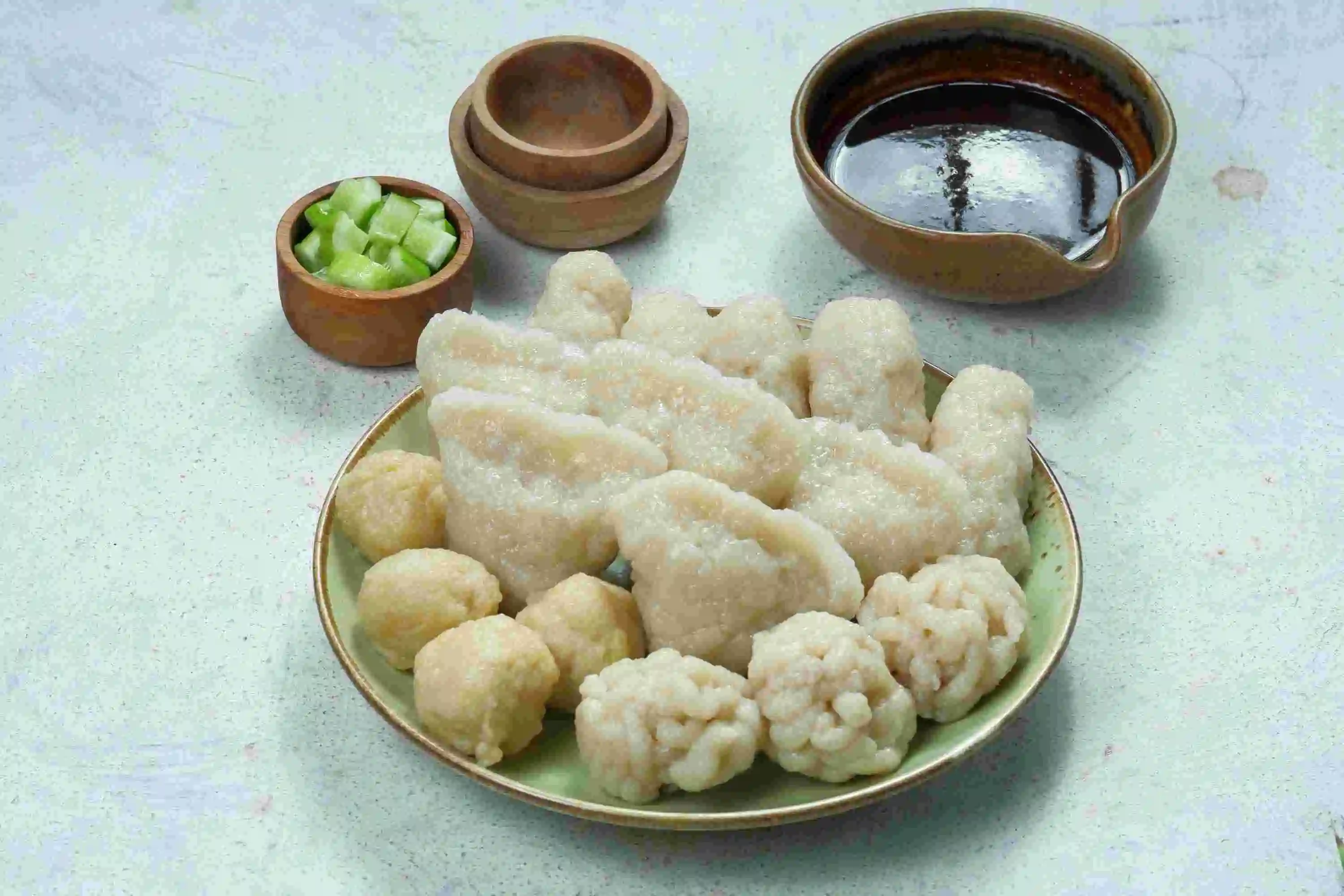Who hasn’t heard of this famous fish-based dish from Palembang? Pempek has become a delicious dish that has made its mark worldwide. Pempek is now ranked as the fourth tastiest seafood dish in the world. This, of course, is a source of pride for Indonesians, as their traditional dish is recognized globally.
The popularity of pempek also significantly impacts business owners. Many culinary businesses are thriving, and pempek is one of them. If you're interested in starting this business, check out the full review below.
Also Read: Tips for Successfully Establishing a Sundanese-themed Restaurant: What Should Be Prepared?
1. Advantages of a Pempek Business
A pempek business has several advantages that make it an attractive and promising venture. Here are some of the benefits:
1.1 High Demand
Pempek is a beloved traditional Indonesian dish, especially popular in South Sumatra. Many people love the savory and chewy taste of pempek, so the demand for this dish is high in various regions across Indonesia.
1.2 Relatively Low Initial Capital
Starting a pempek business doesn't require a massive initial capital. The main ingredients, such as mackerel fish, sago flour, and seasonings, are relatively easy to obtain and not too expensive.
1.3 Easy Production Process
While there are specific techniques to make delicious pempek, the production process is relatively simple. With practice and experience, anyone can produce high-quality pempek.
1.4 Variety of Product Options
Pempek comes in various forms, such as lenjer, kapal selam, kulit, adaan, and others. This allows for menu variety, offering more choices to customers and attracting more potential buyers.
1.5 Wide Market Opportunity
Pempek can be sold in various business formats, from small stalls to restaurants, and even as packaged souvenirs. For those wanting to start an online pempek business, it can be sold as frozen food and shipped to different regions.
1.6 Flexible Consumption
Pempek can be enjoyed as a snack, a main course, or as a souvenir. Customers can enjoy it at any time of the day—morning, noon, or night—so its market isn't limited to a specific time.
1.7 Export Potential
Pempek also has the potential to be exported abroad, especially to countries with large Indonesian communities or international markets that are interested in exotic foods.
Also Read: 8 Tips for Starting a Promising Export-Import Business in Indonesia
1.8 Attractive Profit Margins
With proper management and the right marketing strategy, a pempek business can offer high profit margins, particularly when produced on a larger scale with strong branding.
2. Risks of a Pempek Business
Although the pempek business has many advantages, like any food business, there are some risks to consider. Here are a few risks you might face when running a pempek business:
2.1 Ingredient Quality
High-quality pempek heavily depends on the quality of its ingredients, especially fish. If the supply of fish is unstable or its quality declines, this can affect the taste and texture of the pempek. Additionally, using stale ingredients can hurt product quality and lead to losses.
2.2 High Competition
The pempek business is already quite popular, particularly in big cities. Many businesses sell pempek, from small vendors to large-scale enterprises. This intense competition can be a challenge in attracting customers and maintaining their loyalty.
2.3 Changing Consumer Preferences
Consumer tastes can change over time. If people start getting bored with pempek or a new food trend emerges, pempek demand could decrease. This is why product innovation is important to stay relevant.
2.4 Dependence on Skilled Employees
Pempek production requires specific skills, especially in dough preparation and fish processing. If a key employee with these skills leaves or doesn’t perform well, product quality could be compromised.
2.5 Distribution and Storage Challenges
Unsold pempek needs to be stored properly to maintain its quality. Improper storage can lead to spoilage, particularly in warm climates. This can result in losses from unsellable products.
2.6 Hygiene and Health Concerns
Foods like pempek are prone to contamination if not prepared and stored correctly. Cases of food poisoning or spoiled products can damage a business’s reputation and reduce customer trust.
2.7 Fluctuating Ingredient Prices
The cost of key ingredients, such as fish, can fluctuate depending on the season and market conditions. If ingredient prices rise sharply, profit margins may shrink unless retail prices are also adjusted.
2.8 Financial Management
Poor financial management can lead to cash flow problems, just like in any other business. Inefficient stock management or operational waste can negatively impact a business’s finances.
3. Tips for Starting a Pempek Business
Starting a pempek business can be a profitable venture, especially given the popularity of this signature Palembang dish. Here are some tips to help you get started:
3.1 Choose the Best Supplier
Selecting a good supplier for your pempek business's ingredients is crucial to ensure the quality of the final product. One of the main ingredients for pempek is fish, such as mackerel, snakehead, or belida fish. Additionally, ensure that the sago flour you use is free of additives and of good quality to achieve the desired chewy texture.
3.2 Serve Delicious Pempek with Appealing Presentation
Just like the importance of first impressions, appearance matters with food as well. The shape and flavor of your pempek should meet customer expectations. Customers will remain loyal if your pempek tastes great, so ensure you maintain a high standard of taste in your business.
3.3 Set Competitive Prices
Besides taste quality, pricing is a key consideration for customers. Survey the prices of pempek at nearby stalls, restaurants, and other sellers in your area. Also, check the prices of pempek sold online through marketplaces or food delivery apps. Online prices tend to be higher due to additional costs like packaging and shipping.
3.4 Pick a Strategic Location
Choose a strategic location for your pempek business. Ideal spots include campuses, shopping centers, food hubs, office areas, or tourist attractions. Don’t forget to check the necessary permits to ensure the smooth operation of your business.
3.5 Prepare Necessary Equipment and Tools
Having the right equipment for your pempek business is essential for smooth operations. Some of the equipment needed includes gas stoves, large pots, fryers, food processors, and woks. You’ll also need serving utensils such as bowls, plates, spoons, forks, chopsticks, and take-away packaging.
3.6 Employ Loyal Staff
Loyal employees are a valuable asset for your business’s success. Employee loyalty not only boosts productivity but also reduces turnover and training costs. It’s important to hire staff who are eager to learn and honest, as they will help ensure your business runs smoothly.
3.7 Promote Aggressively and Effectively
Effective marketing strategies can help increase pempek sales and build your brand. Social media can be a great tool for new business owners, allowing you to reach a wider audience. Don’t forget to offer special promotions, such as discounts or bundle deals.
3.8 Plan Your Capital Investment Well
The pempek business opportunity is promising, so you need solid capital planning. With sufficient capital, you can ensure smooth operations and long-term business success. Funding options may include personal capital, bank loans, investors, crowdfunding, or government subsidies.
Also Read: Here are 8 Ways to Start a Popular Satay Business and Estimated Capital
4. Delicious Pempek Recipe
Here is a delicious pempek recipe you can try. This recipe is for making "kapal selam" pempek, a type of pempek filled with egg.
4.1 Ingredients
For the pempek dough:
- 500 grams mackerel fish meat, finely ground (you can also use snakehead fish or other white-fleshed fish)
- 300 ml ice water
- 300-400 grams sago/tapioca flour
- 1 teaspoon salt
- 1 tablespoon sugar
- 2 cloves garlic, finely minced
For the filling:
- 2 eggs, lightly beaten (for the "kapal selam" pempek filling)
For the cuko sauce:
- 250 grams palm sugar, finely shaved
- 500 ml water
- 5 cloves garlic, finely minced
- 10 red bird’s eye chilies (adjust to taste), finely minced
- 1 tablespoon tamarind, dissolved in a bit of water
- 1 teaspoon salt
- 1 tablespoon dried shrimp (ebi), roasted and ground
Condiments:
- Cucumber, diced small
- Yellow noodles, soaked in hot water, drained (optional)
4.2 Instructions
1. Making the pempek dough:
- Mix the finely ground fish with ice water, stirring until the fish becomes soft.
- Add salt, sugar, and finely minced garlic. Stir until the seasonings are well combined.
- Gradually add sago flour while stirring until the dough can be shaped and doesn’t stick to your hands. Be careful not to add too much flour to keep the pempek chewy and not hard.
- Take a small portion of the dough, form it into a ball, then press the center to create an indentation. Pour a little beaten egg into the indentation, then seal it carefully to prevent the egg from spilling out.
- Boil water in a pot until it reaches a rolling boil, then add a little oil to prevent the pempek from sticking. Place the formed pempek into the boiling water. Cook until the pempek floats and is fully cooked (about 10-15 minutes). Remove and drain.
2. Making the cuko sauce:
- Boil water and add the finely shaved palm sugar, stirring until the sugar dissolves.
- Add the finely minced garlic, bird’s eye chilies, salt, and the dissolved tamarind. Simmer over low heat until it boils and the flavors meld together.
- Add the roasted and ground dried shrimp (ebi). Cook briefly until the sauce thickens, then remove from heat and strain the sauce.
Also Read: Complete Guide to a Successful Meatball Business With Lots of Buyers
5. Pempek Business Capital Estimation
Here is an estimate of the capital needed to start a pempek business, as well as the projected profits, to help you understand the potential of this business:
5.1 Estimated Initial Capital
Equipment and supplies:
- Gas stove (2 burners): IDR 500,000
-
Gas cylinders and refills (2 units): IDR 400,000
-
Large pot and frying pan: IDR 300,000
-
Wok, spatula, oil strainer, and other cooking utensils: IDR 200,000
-
Blender or food processor: IDR 500,000
-
Digital scale: IDR 150,000
-
Bowls, plates, spoons, forks: IDR 200,000
-
Tables and chairs (for 4-5 sets): IDR 1,000,000
-
Display case or cart: IDR 2,000,000 - IDR 3,000,000
-
Banners, signage, and name board: IDR 300,000
TOTAL: IDR 5,550,000 - IDR 6,550,000
Raw materials:
● Mackerel fish (10 kg x IDR 50,000): IDR 500,000
● Sago flour (5 kg x IDR 15,000): IDR 75,000
● Seasonings (garlic, salt, sugar, etc.): IDR 50,000
● Chicken eggs (2 trays, 30 pcs each x IDR 30,000): IDR 60,000
● Palm sugar and tamarind for cuko: IDR 100,000
● Dried shrimp (ebi): IDR 50,000
● Bird’s eye chilies, cucumber, and other condiments: IDR 100,000
TOTAL: IDR 935,000
Packaging:
● Oil paper or plastic bags (500 pcs): IDR 150,000
● Plastic or styrofoam packaging for takeaway (200 pcs): IDR 200,000
TOTAL: IDR 350,000
TOTAL INITIAL CAPITAL: IDR 6,835,000 - IDR 7,835,000
5.2 Monthly Operating Costs
● Rent (for a small space): IDR 1,000,000 - IDR 2,000,000
● Employee salaries (1-2 people, if needed): IDR 2,000,000 - IDR 4,000,000
● Electricity and water: IDR 300,000
● Gas (2 cylinders per month): IDR 200,000
● Promotion (social media, brochures, etc.): IDR 300,000
TOTAL MONTHLY OPERATING COSTS: IDR 3,800,000 - IDR 6,800,000
5.3 Estimated Revenue and Profit
● Average selling price of pempek (per portion, 3-4 pieces): IDR 15,000
● Sales target per day: 50 portions
TOTAL SALES PER MONTH (30 days): 50 portions x IDR 15,000 x 30 days = IDR 22,500,000
5.4 Estimated Monthly Profit
- Monthly revenue: IDR 22,500,000
- Monthly operating costs: IDR 3,800,000 - IDR 6,800,000
- Monthly raw material costs (e.g., daily raw materials for 50 portions of pempek cost around IDR 600,000, totaling IDR 600,000 x 30 = IDR 18,000,000)
Total Monthly Expenses:
= Operating Costs + Raw Material Costs
= (IDR 3,800,000 - IDR 6,800,000) + IDR 18,000,000
= IDR 21,800,000 - IDR 24,800,000
Monthly Profit:
= Revenue - Total Expenses
= IDR 22,500,000 - IDR 21,800,000 (IDR 24,800,000)
= IDR 700,000 - IDR 2,700,000
With proper planning, efficient management, and effective marketing strategies, a pempek business has promising profit potential. Therefore, careful preparation is necessary before starting the business, considering capital and marketing strategies to maximize profits.
For BFI friends who are interested in starting a pempek business but are constrained by initial capital, BFI Finance can be the solution. BFI Finance offers secured loans for business capital with a fast and easy process.
Get loans with long tenors and competitive interest rates. Click the following links for more information:
House Certificate Secured Loan
#SelaluAdaJalan with BFI Finance.






